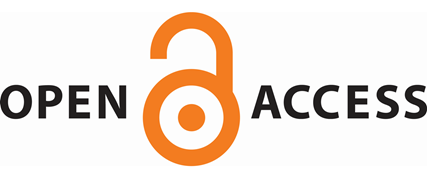Written by Nancy Shin, Scholarly Communications Librarian, Welch Medical Library
Open Access Week is next week. Check out the events happening across campuses and online.
Open Access refers to freely available, digital, online information. It is free of charge and often has less restrictive copyright and licensing barriers than traditionally published works, for both the users and the authors.
What are the types of OA for scholarly literature?
Green OA publishing refers to the self-archiving of published or pre-publication works for free public use. Authors provide access to preprints[1] or post-prints[2] (with publisher permission) in an institutional or disciplinary archive such as JScholarship or arXiv.org. Some reasons why people want to publish their pre-prints include: research can be disseminated more rapidly than traditional publishing; research can be disseminated more widely, to a broader pool of potential readers; authors can establish claim to ideas and research; authors can receive speedier feedback on their work. Some people worry that the ideas in a pre-print will be scooped up and will jeopardize their publication opportunities, but this can be avoided by applying a Creative Commons license to your pre-print to protect it from misuse or from improper attribution.
Gold OA refers to articles in fully accessible OA journals. Publishing costs money, and while traditionally that money has come from subscriptions – a ‘reader pays’ model – gold OA is an effort to explore the alternatives. One popular model is an ‘author pays’ system, where publishing costs are supported by article processing charges (APCs) paid by the author. But this is not the only possible method, and there are funders and academic societies/libraries experimenting with ways to cover costs outside of the for-profit publishing system that do not put a burden on authors to pay these APC fees. Examples of Gold OA include PLoS (Public Library of Science) and BioMed Central publishers. According to this OA Diamond Journals Study, the global average is 27% APC-based, 73% OA diamond journals.
Hybrid OA offer authors the option of making their articles open access, for a fee. Journals that offer hybrid OA are still fundamentally subscription journals with an open access option for individual articles. The problem with Hybrid OA is publisher double dipping – meaning that publishers of hybrid journals are taking money twice for the same content; once from the author/funder/institution (in the form of APCs) and again from subscribers (in the form of reading subscription fees). Funders are pushing back on unfair business models like hybrid OA. For example, cOAlition S is no longer supporting transformative arrangements and journals after 2024! They believe that …
“the strategy of providing financial support for these arrangements – endorsed by many cOAlition S members – beyond 2024 would significantly increase the risk that these arrangements will become permanent and perpetuate Hybrid Open Access, which cOAlition S has always firmly opposed (cOAlition S, 2023).”
Diamond OA publishing describes journals that are completely free to publish and to read. The cost of maintaining and publishing the journal is usually borne by the organization that sponsors the journal. Diamond OA status has no impact on the journal’s peer review process. By making articles completely free to both publish and to read, Diamond OA best approaches the goals of democratizing and widely distributing academic scholarship.
According to this OA Diamond Journals Study, the OA diamond sector is diverse in terms of regions (45% in Europe, 25% in Latin America, 16% in Asia, 5% in the US/Canada) and disciplines (60% HSS, 22% science, 17% medicine).
Bronze OA publishing describes articles that are free to read on a publisher’s homepage, but without clarity on the specific licenses covering an article. Bronze OA articles may be free to read due to a temporary publisher marketing campaign, for example.
Useful Open Access Tools:
- Sherpa Romeo: Online resource that centralizes information about Open Access journal/publisher policies from around the world.
- Sherpa Juliet: Searchable database on Open Access funder policy requirements.
- OpenDOAR: Directory of Open Access repositories.
References:
- University of Washington’s Nuts and Bolts of Scholarly Publishing LibGuide
- UMass Amherst’s Open Scholarship & Scholarly Publishing LibGuide
- Cornell University’s Open Access Publishing LibGuide
[1] A preprint is defined as the version of research/manuscript that precedes formal peer-review.
[2] A postprint is a digital draft of a research journal article after it has been peer reviewed and accepted for publication, but before it has been typeset and formatted by the journal.






